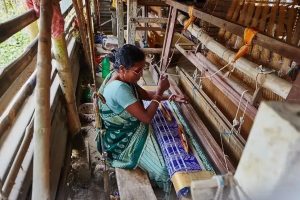Supporting Women Self-Help Group Federations

Image Credit: Shutterstock
Self Help Groups (SHGs) are the foundation of Indian microfinance, and are a particularly Indian concept. They are different from the Joint Liability Groups (JLGs) through which Micro Finance Institutions (MFIs) provide loan funds to women. SHGs encourage savings, opening of bank accounts, inter-loaning among members, and most importantly, members of SHGs decide their financial products, and make a margin on financial intermediation that they retain. This is in contrast to the JLG model where women come together to promise 100% repayments week after week to the MFIs, but do not have agency, or returns from such risk-taking.
Women SHGs and their federations are women-led, earn profits for women, cater to their needs and are accountable to women. They are community-owned organisations. MFIs, by contrast, are capitalized largely by investors and shareholders, earn profits for them, and are accountable to them. The SHG model promotes agency of women, the MFI model instrumentalises female characteristics of responsibility in the form of joint liability. The community-owned model has empowerment impacts, the MFI model extends loans larger in size compared to SHGs, which women use mostly as working capital in micro-enterprises. One could say: Women’s SHGs and federations are like sisters-in-solidarity, while MFIs are like a boys’ club.
Both models have been piloted, nurtured and grown side by side, like a sister and a brother that have grown up together, and have sibling rivalry, as we have seen in the events in Andhra Pradesh. They are both equally strong too.
The microfinance industry in India extended loans of over Rs. 124,000 crores (USD 19.38 billion) in 2016–17. Of these, about 50%, Rs. 61,581 crore (USD 9.62 billion) were through the Self Help Group — Bank Linkage (SHG-BL) model. In March 2017, there were 85.77 lakhs, or 8.6 million savings linked SHGs, of which 73.22 lakhs (85.4%) were women SHGs. The total number of members was 1010 lakhs, or 101 million, of which 863 lakh were women. The total savings of these SHGs was Rs. 14,114 crores (USD 2.2 billion), which contributed significant resources to banks. About half of these savings, Rs. 7,552.7 crores (USD 1.18 billion), were from SHGs under the National Rural Livelihood Mission (NRLM) programme, which shows that many SHGs continue from before and outside NRLM.
MFIs are more visible, stronger, louder, and draw more resources from investors and donors, than SHGs do. Half the SHGs are like women who are married off, with little support from the parent NGOs that formed them. The other half have NRLM’s parentage, with all the patronage and patriarchy that follows, meeting the same fate as the other older SHGs.
Sustaining and strengthening SHGs could be achieved by federating them. While many federations exist in India, they lack strong capacity building and financial support. SHGs formed under NRLM are federated as Village Organisations (VOs). Some are also federated at block or even district levels, but their institutionalization as financial intermediaries is wanting, with very few registered as cooperatives. As banks extend large funding to MFIs, the percentage of loans to SHG-BL is only likely to decrease. Aggregation of SHGs and federations would enable efficiency in accessing bank funds, but with no viable aggregation strategy in place, it seems likely that SHGs will remain short of the loan funds they need to make a significant impact on rural livelihoods.
Today, the sister and brother are almost equal, but the sister stands on weak ground. Investors have cast in their lot with the MFIs. Donors and stakeholders in the field of community based organisations and women’s empowerment need to garner their resources and enable large federations and networks of women, with institutional forms that can do financial intermediation at scale. Sampark is engaged in addressing this issue. Collaborators are welcome.
This article was originally authored by Prof. Smita Premchander.
